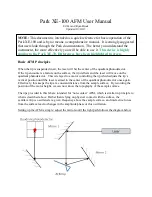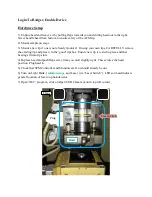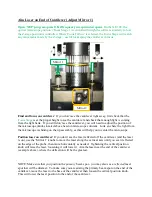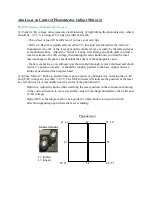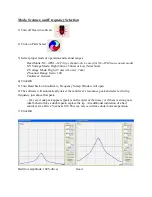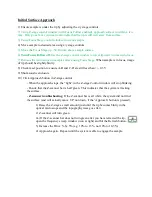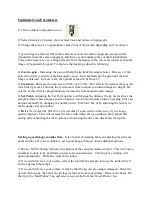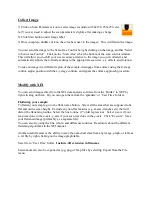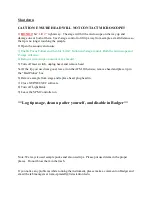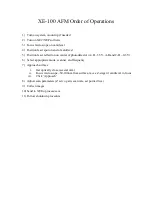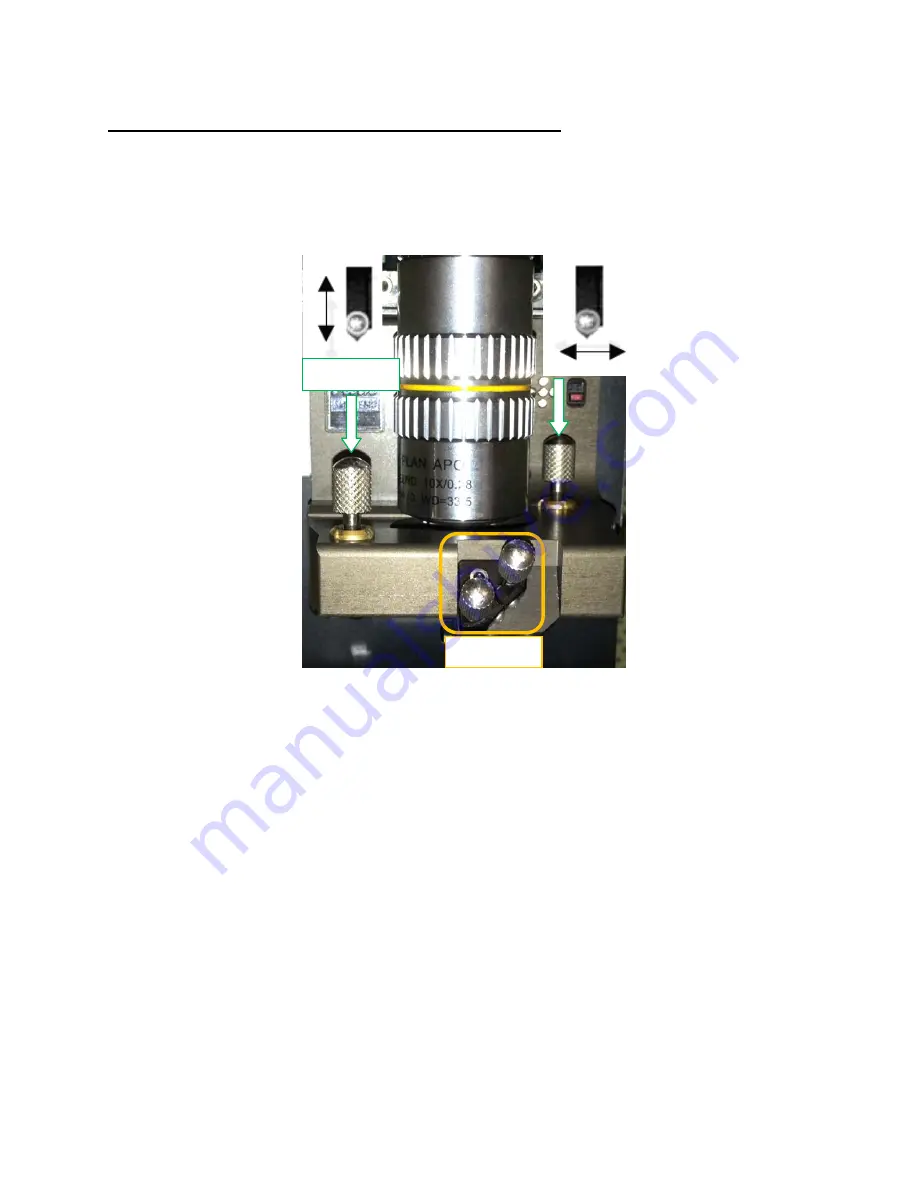
Aim Laser on End of Cantilever (Adjust Mirror 1)
Open ‘XEP’ program, press OK if frequency sweep window opens.
On the XE-100, the
optical microscope position (‘Focus Stage’) is controlled through the software similarly to how
the Z-stage position is controlled. When ‘Focus Follow’ is selected, the Focus Stage will match
any movements made by the Z-stage – useful for keeping the cantilever in focus.
Find and focus on cantilever
: If you don’t see the cantilever right away, first check that the
Focus Stage
is at the proper height to see the cantilever and check that enough light is coming
from the light bank. If you still don’t see the cantilever, you will need to adjust the position of
the microscope (knobs located above head on microscope column). Look at where the light from
the microscope is shining on the tip assembly, as this will help you to center the microscope.
Position laser on cantilever:
If you don’t see the laser reflected off the cantilever (and the laser
is on), use the ‘Mirror 1’ knobs to move the laser along the vertical axis until you see it reflected
on the edge of the probe, then move horizontally as needed. Tightening the vertical position
knob will raise the laser, loosening it will lower it. Aim the laser near the end of the cantilever
(example above), where the deflection will be the greatest.
NOTE: Make sure that you position the
primary
beam spot - you may also see a
reflected
laser
spot that will be dimmer. To make sure you are aiming the primary beam spot on the end of the
cantilever, move the laser to the base of the cantilever then loosen the vertical position knob.
This will lower the laser position to the end of the cantilever.
Mirror 2
Mirror 1
x
y

